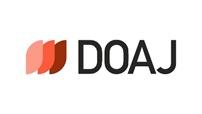Abstract
The impact of competition on pricing has been studied in the context of counterfactual merger analyses where expected optimal prices in a hypothetical monopoly are compared with observed prices in an oligopolistic market. Such analyses would typically assume static decision making by consumers and firms and thus have been applied mostly to data obtained from consumer packed goods such as cereal and soft drinks. However such static modeling approach is not suitable when decision makers are forward looking. When it comes to the markets for durable products with indirect network effects, consumer purchase decisions and firm pricing decisions are inherently dynamic as they take into account future states when making purchase and pricing decisions. Researchers need to take into account the dynamic aspects of decision making both in the consumer side and in the supplier side for such markets. Firms in a two-sided market typically subsidize one side of the market to exploit the indirect network effect. Such pricing behaviors would be more prevalent in competitive markets where firms would try to win over the battle for standard. While such qualitative expectation on the relationship between pricing behaviors and competitive structures could be easily formed, little empirical studies have measured the extent to which the distinct pricing structure in two-sided markets depends on the competitive structure of the market. This paper develops an empirical model to measure the impact of competition on optimal pricing of durable products under indirect network effects. In order to measure the impact of exogenously determined competition among firms on pricing, we compare the equilibrium prices in the observed oligopoly market to those in a hypothetical monopoly market. In computing the equilibrium prices, we account for the forward looking behaviors of consumers and supplier. We first estimate a demand function that accounts for consumers`` forward-looking behaviors and indirect network effects. And then, for the supply side, the pricing equation is obtained as an outcome of the Markov Perfect Nash Equilibrium in pricing. In doing so, we utilize numerical dynamic programming techniques. We apply our model to a data set obtained from the U.S. video game console market. The video game console market is considered a prototypical case of two-sidedmarkets in which the platform typically subsidizes one side of market to expand the installed base anticipating larger revenues in the other side of market resulting from the expanded installed base. The data consist of monthly observations of price, hardware unit sales and the number of compatible software titles for Sony PlayStation and Nintendo 64 from September 1996 to August 2002. Sony PlayStation was released to the market a year before Nintendo 64 was launched. We compute the expected equilibrium price path for Nintendo 64 and Playstation for both oligopoly and for monopoly. Our analysis reveals that the price level differs significantly between two competition structures. The merged monopoly is expected to set prices higher by 14.8% for Sony PlayStation and 21.8% for Nintendo 64 on average than the independent firms in an oligopoly would do. And such removal of competition would result in a reduction in consumer value by 43.1%. Higher prices are expected for the hypothetical monopoly because the merged firm does not need to engage in the battle for industry standard. This result is attributed to the distinct property of a two-sided market that competing firms tend to set low prices particularly at the initial period to attract consumers at the introductory stage and to reinforce their own networks and eventually finally to dominate the market.
Recommended Citation
Kim, Min Kyung and Song, Ins Eong
(2014)
"Measuring the Impact of Competition on Pricing Behaviors in a Two-Sided Market,"
Asia Marketing Journal: Vol. 16
:
Iss.
1
, Article 4.
Available at: https://doi.org/10.53728/2765-6500.1527
Creative Commons License

This work is licensed under a Creative Commons Attribution 4.0 License.





